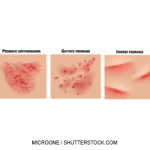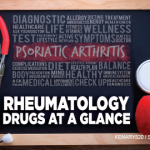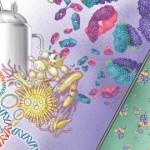The first biosmilar products have been approved in the U.S. and Canada, following Europe’s early lead.
Canada approved its first biosimilar monoclonal antibody (mAb) therapy, known as Inflectra (infliximab), on March 30, 2015.1 In Canada, biosimilars are being called subsequent entry biologic (SEB) agents. Inflectra is approved for treating patients with rheumatoid arthritis (RA), ankylosing spondylitis (AS), psoriatic arthritis (PsA) and plaque psoriasis. For an SEB approval in Canada, the product must show comparative clinical efficacy, quality and safety to the reference product (in this case, Remicade). Following Health Canada’s requirements, developed SEBs can be considered therapeutic alternatives to existing biologics. Health Canada approved Inflectra following a review of safety, efficacy and tolerability data from a comprehensive development program.
In a Phase 3 randomized, double-blind RA study, Inflectra met its primary endpoint of biosimilarity to Remicade. Safety and tolerability were similar for Inflectra compared with Remicade’s safety profile.
The European Medicines Agency approved its first biosimilar in 2006.
The U.S. approved its first biosimilar product on March 6, 2015.2 Biosimilar to filgrastim and designated filgrastim-sndz (Zarxio), the agent received all the indications of the reference product Neupogen, which was originally licensed in 1991. U.S. biosimilars are biologicals approved on the basis they show that they’re highly similar to an already-approved biological product, the reference product. Biosimilars must also show no clinically meaningful differences related to effectiveness and safety compared with the reference product. In biosimilars, only minor differences in clinically inactive components are allowed.
U.S. biosimilars are biologicals approved on the basis they show that they’re highly similar to an already-approved biological product, the reference product.
In the Pipeline
Twice as many patients treated with higher doses of brodalumab, an interleukin-17 inhibitor in Phase 3 clinical trials, achieved a Psoriasis Area and Severity Index of 100 (PASI 100) at 12 weeks (total clearance with brodalumab), compared with ustekinumab-treated patients (44% vs. 22%).3 All treated patients had moderate-to-severe plaque psoriasis. Patients treated with brodalumab 210 mg every two weeks also had a numerically higher PASI 75 response rate (86%) compared with a 67% response rate for brodalumab 140 mg, a 70% response rate for ustekinumab and an 8% response rate for placebo-treated patients (P=0.078). The investigators noted that for the most part, those patients who had an early response to brodalumab were maintained during the 52-week follow-up. A rating of clear or almost clear by the static Physician Global Assessment (sPGA 0 or 1) was a secondary endpoint. Seventy-nine percent of patients who received brodalumab 210 mg achieved this secondary endpoint, and 58% of those patients treated with 140 mg brodalumab met that endpoint, compared with 4% of placebo-treated patients (P<0.001). Adverse drug reactions included arthralgia, headache, nasopharyngitis and upper respiratory infection. Serious adverse events occurred in 1.0–2.6% of treated patients. A higher rate of candidiasis was noted at Week 12 in patients treated with brodalumab 210 mg, 1.4% vs. 0.6% of placebo-treated patients. By Week 52, candidiasis had occurred in 4.0–6.5% of brodalumab-treated patients.
Study Updates
Using a validated score for assessing synovitis, bone erosion and bone edema, the Outcome Measures in Rheumatology (OMERACT) RA Magnetic Resonance Imaging (MRI) system, Østergaard et al evaluated decreases in joint inflammation among RA patients following four months of treatment with certolizumab pegol.4 This was a double-blind, randomized study utilizing contrast-enhanced MRI of the wrist and metacarpophalangeal joints in a small group of 40 European patients.
Patients received certolizumab pegol treatment with doses of 400 mg at Weeks 0, 2 and 4, and then received 200 mg certolizumab pegol every two weeks thereafter, or they received placebo for the first two weeks, and then they received certolizumab pegol 400 mg/200 mg regimen through Week 16.
MRI was obtained at baseline, then at Weeks 1, 2, 4, 8 and 16. Most patients were women (75%) with a mean age of 50 and a mean disease duration of more than five years. All patients had active disease despite the use of nonbiologic disease-modifying antirheumatic drugs (DMARDs). They could have used at least one biologic DMARD.
The mean change from baseline in synovitis score at Week 16 was greater for the certolizumab-treated group than for the group that initially received placebo. This change was not statistically significant. MRI comparisons from baseline to Week 8 numerically decreased for osteitis or synovitis, but this was also not statistically significant. Throughout the study, bone erosion scores did not change. At Week 16, the overall ACR 20 response was 86%. Utilizing EULAR criteria, 95% of patients had a moderate or good response. Additionally, the Disease Activity Score in 28 joints (DAS28) decreased from a median of 5.2 at baseline to 2.5. In the active treated patients, there was evidence of clinical benefit as early as Week 1. Adverse drug reactions were mild to moderate in intensity, and the most common reactions were herpes virus and upper respiratory tract infections. No serious infections occurred. This study helps narrow down the potential time frames of obtaining MRIs to assess early response to treatment in RA patients.
Michele B. Kaufman, PharmD, CGP, RPh, is a freelance medical writer based in New York City and a pharmacist at New York Presbyterian Lower Manhattan Hospital.
References
- Hospira’s Inflectra (infliximab) now available in Canada. Hospira Inc. 2015 March 30.
- FDA approves first biosimilar product Zarxio. FDA News Release. 2015 March 6.
- Bankhead C. IL-17 inhibitor clears psoriasis more often—Brodalumab twice as likely to clear all lesions as ustekinumab. MedPage Today. 2015 March 22.
- Østergaard M, Jacobsson LTH, Schaufelberger C, et al. MRI assessment of early response to certolizumab pegol in rheumatoid arthritis: A randomised, double-blind, placebo-controlled phase IIIb study applying MRI at weeks 0, 1, 2, 4, 8, and 16. Ann Rheum Dis. 2014 Dec 15. pii: annrheumdis-2014-206359. doi: 10.1136/annrheumdis-2014-206359. [Epub ahead of print]



